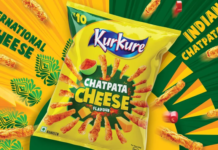Singapore, December 19, 2017: Moody’s Investors Service has a stable outlook for non-financial corporates in India (rated Baa2 stable by Moody’s), except for telecoms, which has a negative outlook.
Moody’s Indian affiliate ICRA has stable outlooks on the passenger vehicle, construction, cement, and textiles sectors, but a negative outlook on real estate.
“Our stable outlook is underpinned by the expectation that GDP growth of around 7.6% will result in higher sales volumes, which along with new production capacity and stabilizing commodity prices, will support EBITDA growth of 5%-6% over the next 12-18 months,” says Laura Acres, Managing Director at Moody’s Corporate Finance Group.
“Further simplification of the Goods and Services Tax (GST) and other structural reforms or improved commodity prices could result in higher EBITDA growth, and provide means for deleveraging for some corporates,” adds Acres.
Moody’s has a stable outlook for exploration & production companies, reflecting expectations of stable production volumes, low subsidy burdens and stable oil prices.
For refining & marketing, Moody’s stable outlook is based on the consideration that capacity additions and higher refining margins will increase earnings, even as marketing margins stay stable. While high dividend payments remain a concern, Moody’s says that if the GST net is widened to petroleum products, it would be a credit positive for the sector.
Moody’s maintains a stable outlook for base metals with improved fundamentals and supply deficits in certain metals supporting stable prices over the next 12-18 months. Moody’s expects base metal pricing premiums to narrow, although higher production from capacity additions and cost rationalization measures will drive earnings expansion.
Moody’s also expects India’s steel consumption to grow in the mid-single digits over the next 12-18 months, lower than India’s GDP growth of 7.6%, supporting a stable outlook. Consolidation will also rise in the steel sector.
Moody’s stable outlook on IT services incorporates the expectation that Indian companies will remain in the forefront in offering IT services to the Western economies, weighed against some of the global challenges, especially in terms of H1B visas and the fast-pace of technology change that will require investments or acquisitions.
The only sector where Moody’s has a negative outlook for India is telecoms, where intense competition and heavy debt loads continue to pressure cash flows, ultimately driving consolidation activity towards a three player market.
“ICRA believes the outlook for the passenger vehicle industry remains stable. While demand over the near and medium term is expected to remain robust at 9-11%, supported by favorable demographics, rising competition will limit pricing power,” says Anjan Ghosh, Chief Rating Officer for ICRA Limited.
The spend on product development, including for tightening emission norms, especially for diesel OEMs, will drive a significant part of capex (INR250-300 billion) over the next 2-3 years.
And for the next 4-5 years, the industry faces potentially significant disruption from electric vehicles, although the pace of adoption depends on government policy. While many OEMs are preparing for electric vehicles, the transition period may see significant disruptions in industry dynamics.
“ICRA’s outlook for the real estate sector remains negative over the near to medium term. The sector continues to face demand headwinds owing to elevated property prices, a subdued business environment, and regulatory developments such as the Real Estate Regulation & Development Act (RERA) and GST. This — coupled with execution delays — has dampened consumer confidence, resulting in deferred purchase decisions,” says Ghosh.
The supply side has seen a reduction in new project launches owing to the regulatory developments as well as slow sales. Developers are likely to focus on completing current projects and reducing unsold inventory, which along with the moderation in new launches, can reduce the supply overhang over the medium term.
ICRA expects the sector to consolidate with larger developers to benefit in the long run, given the tighter compliance and transparency requirements.
New orders in the construction sector are expected to remain healthy over the next 2-3 years, supported by huge spending on roads, railways, urban infrastructure, and affordable housing . The healthy order book — along with an easing in the approval process — is expected to a support ramp-up in execution pace and result in higher growth in operating income for the construction companies over the medium term.
Operating profitability is also expected to improve with the benefits of increased scale of execution, although this would also be sensitive to any steep rise in raw material and labor prices. Borrowing levels are expected to increase marginally to support working capital requirements with the greater scale of operations.
On the other hand, asset monetization could help lower borrowing. Interest cover will gradually improve over the next few years; however, meaningful improvements in debt metrics would depend on asset monetization plans.
The outlook on the cement sector remains stable. Cement off-take remained weak in H1 FY2018, reporting decline of 2%, due to subdued real estate activity, a sand shortage and transitional issues related to implementation of structural reforms, like the Real Estate Regulatory Authority Bill and GST.
Based on current trends, ICRA expects demand to recover from Q4F Y2018 onwards, reporting growth of ~1% in FY2018. Expected incremental demand from the affordable housing segment, along with increases in infrastructure spend, are the key drivers for the industry in medium term.
ICRA expects demand growth to improve to ~4%-5% in FY2019 and to ~6%-8% in FY2020-FY2021. However, new project announcements from the private sector remain weak and the revival of public-private partnerships is crucial to improve the pace of infrastructure development.
ICRA expects the credit profiles of domestic textile companies to remain stable. During the last 3-4 quarters, the industry witnessed multiple headwinds owing to demonetization, the transition to GST, adverse currency movements, reductions in export incentives, sustained declines in yarn demand from China, and rises in cotton prices which exerted pressure growth and profitability.
The sector’s credit profile however demonstrated resilience, supported by declining aggregate debt, as the industry decreased debt-funded expansions. Favorable developments in the current year, especially an easing in cotton prices and an accommodative stance on GST/ export incentives, are expected to subside growth and profitability pressures for the sector further, cushioning the impact on credit profiles.
This publication does not announce a credit rating action. For any credit ratings referenced in this publication, please see the ratings tab on the issuer/entity page on www.moodys.com for the most updated credit rating action information and rating history.
Corporate Comm India(CCI Newswire)

































